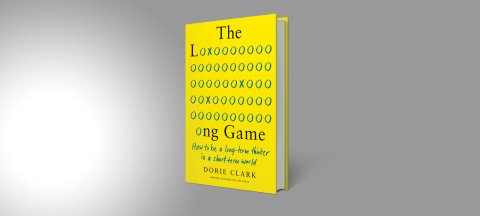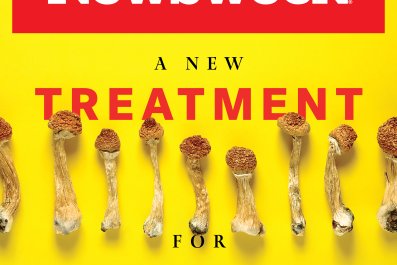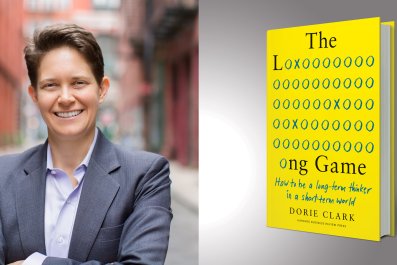COVID-19 led to a sudden shift in how many of us did our jobs—our physical office space as well as when and how we completed our work. The traditional workday became more fluid, allowing for midday exercise breaks or family time, or simply wearing pajamas all day. With these changes, it became more natural to reevaluate our priorities and strive for the ever-elusive work-life balance. In this excerpt from her new book, The Long Game: How to Be a Long-Term Thinker in a Short-Term World (Harvard Business School Press, September 21), top communications coach and branding expert Dorie Clark reveals creative ways to achieve your professional goals in tandem with your personal priorities. Clark's book offers valuable insights into becoming a strategic thinker and accomplishing the end results that matter most to you.

Leveraging for Your Relationships
For most of us, relationships are extraordinarily important. Yet we've all seen or heard stories about the high-powered executive who can't seem to make time for his family, yet professes that they're the reason behind everything he does. What would it look like if work and family weren't a zero-sum game, but instead represented a series of deliberate strategic choices?
Phillip Van Nostrand is a high-end photographer in New York City, earning thousands to shoot weddings or events. But for years, he accepted a $500-a-day assignment to cover a "random JavaScript tech conference in San Francisco."
Why? He's originally from Santa Barbara, and the conference paid for his cross-country flight. "I could spend a week with my family, and it felt like a free trip home for a half-day's work," he says.
I've done the same, accepting lower rates to speak at conferences in North Carolina—which I would have turned down elsewhere—because they gave me an opportunity to visit my mother, now in her 80s. I also looked for opportunities to bring her along on adventures, carting her to a teaching gig in Kazakhstan (she was a hit with the students, who took us out sightseeing in subzero temperatures), and to lecture tours of Vietnam, Singapore and France, among others.
When we're clear about our true priorities, it's a lot easier to optimize accordingly.
Leveraging for the Life You Want
Another powerful way to frame your choices is to understand your ideal lifestyle.
Where, and how, do you want to live? And what would it look like for you to stand up for that vision?
That's what Annmarie Neal asked herself. As a successful executive, life would have been a lot easier if she'd been willing to move to a corporate hub—New York or San Francisco, or maybe Dallas or Chicago. But for more than 25 years, she's instead lived in a small Colorado town, nearly 90 minutes away from Denver. "I fell in love with the 'work hard, play hard' values and lifestyle of the state," she says. "But the mountains feed my soul." She wasn't willing to compromise, even when it meant turning down plum, C-level jobs, including as the head of talent for a Zurich-based company.
But she's nonetheless been surprisingly successful at making her case, including to Cisco, where she served for five years as the Chief Talent Officer, and in her current role leading talent for a large private equity firm. "For an innovation economy worker, the best ideas may come from taking a long walk or two-mile swim," she says. "The desk is not the place where real work may happen. My line is, 'Do you want to hire the best person for the role, or the best person in your zip code?'"
Many of us may not feel empowered to take such a bold stance, and Annmarie was certainly helped by her strong reputation and experience. But even for younger professionals, it's far more possible than we might imagine to leverage our lifestyle choices in small ways.
Phil, the photographer, routinely accepts unconventional payment terms that help him create the kind of "epic freelance life" that he wants. Phil would barter with one client who specialized in the sale of luxury woolen goods. "It'd be a shoot for $500 plus a scarf," he says, "and these are $800 cashmere scarves from Mongolia—they're amazing." It's far more than he'd spend for a scarf on his own, but he loves them. "I have a big throw on my couch, a basket of scarves in my room that I wear regularly in the winter and I gifted my sister one, as well."
Similarly, an acquaintance who owns a hip Mexican restaurant in Brooklyn needed new photos for his website. Phil's typical fee would have been $1200, so the owner suggested $800 plus a $400 restaurant credit. "I was happy to do the exchange and it cost them really nothing to do that bonus," Phil recalls.
Through his flexibility and creativity, Phil has created a lifestyle—replete with high-end fashion and dining—that otherwise wouldn't have been available to him. But it's possible when you decide to leverage for the life you want.

Leveraging for Your Professional Goals
What if we didn't think about "work" and "life" as quite so separate? What if we could find ways to combine them that actually enhanced both?
That's what Christina Guthier wondered. She was a young German doctoral student, planning a vacation overseas to visit a friend in Canada. She and her husband had loved their first trip to New York City a few years prior, so they decided to add a week in the city onto their visit.
Their goal was recreational, but Christina wondered if she could leverage her trip professionally, as well. She asked her thesis advisor if he had any contacts in New York, and he did: a professor at The City College of New York, who invited Christina to come to speak as a guest lecturer. The professor, impressed with her research, ended up citing her in his next book.
In addition to harnessing the professional benefits of vacation time, Christina also looked for opportunities to do the reverse. She made friends with an Australian professor who urged her to come to the University of South Australia as a guest researcher, but the timing never seemed right. When she got pregnant, though, she realized there might be an opportunity. When her daughter was 9 months old, Christina—ready to return to work—boarded a plane to Adelaide with her husband, just in time for him to take two warm and sunny months of paternity leave while she collaborated with new colleagues.
Christina isn't the only professional who's found creative ways to blend travel and professional development. Phil the photographer has, too.
"What I had dreamed of when I started taking pictures, was that someone would fly me somewhere. I wouldn't have to pay for anything, and I would get to travel for free. And that was it."
He'd become friends with a woman who was an expert in historical fashion design. "Before she met me," Phil says, "she'd design a gown for Carnival in Venice, and then go with her friends. But taking pictures on your iPhone is not quite the same thing as having a real photographer follow you around."
So one year, she invited Phil to join them, and he's now traveled with her twice to Venice, once to Paris and Versailles and once to "the South of France during lavender season."
Not everyone would think it's such a great deal. "If you talk to any old-school photographers, [they'd say] I should be getting paid for my time in Venice," he says.
But that's not how he sees it. His friend, despite a robust Instagram following, isn't wealthy. "Squeezing money out of [her and her friends], it wouldn't be satisfying for anybody," he says. "They wouldn't have a budget for me, anyway. And to get a free vacation is priceless."
But it's not just the free vacation. Phil retains the rights to the photos from the trip, which are stunningly lush and atmospheric. "I could sell one of those prints," he says. "And I know that that's going to open doors to someone who sees it and thinks of me for a magazine shoot, which is one of my bigger goals."
Ultimately, he says, "My philosophy is that value is not always just in dollar amounts. I'm looking at the long-term value." Of course, he's glad to take on high-paying corporate work, and that's necessary to pay his rent and expenses. But snapshots of executives at a podium don't necessarily demonstrate his unique artistic vision. "Usually you're either getting money or fame, but you're rarely getting both," he says.
It'd be easy for Phil to accept one lucrative corporate gig after another. But that's never been his goal. Too many of us get waylaid by easy money or other people's expectations about what success looks like. You can't become a pre-eminent photographer—the kind who shoots magazine covers, or has billboards in Times Square—by doing what's easy. You have to be willing to work for free, to build relationships and make strategic tradeoffs that may seem ridiculous to others today, but could prove critical in the future.
If a well-connected person asked him to do headshots, he says, "It would be so much better for me to say, 'Why don't you introduce me to someone important someday?' rather than to take $500 or whatever, because that relationship will probably get me a book deal, or help me out in some other big way."
You have to be willing to wait. You have to be willing to delay gratification. And when you do, you're able to make choices that—in the long run—set you up for far more success than others who took the expedient route.

→ Excerpt adapted from The Long Game: How to Be a Long-Term Thinker in a Short-Term World by Dorie Clark, published by Harvard Business Review Press.









